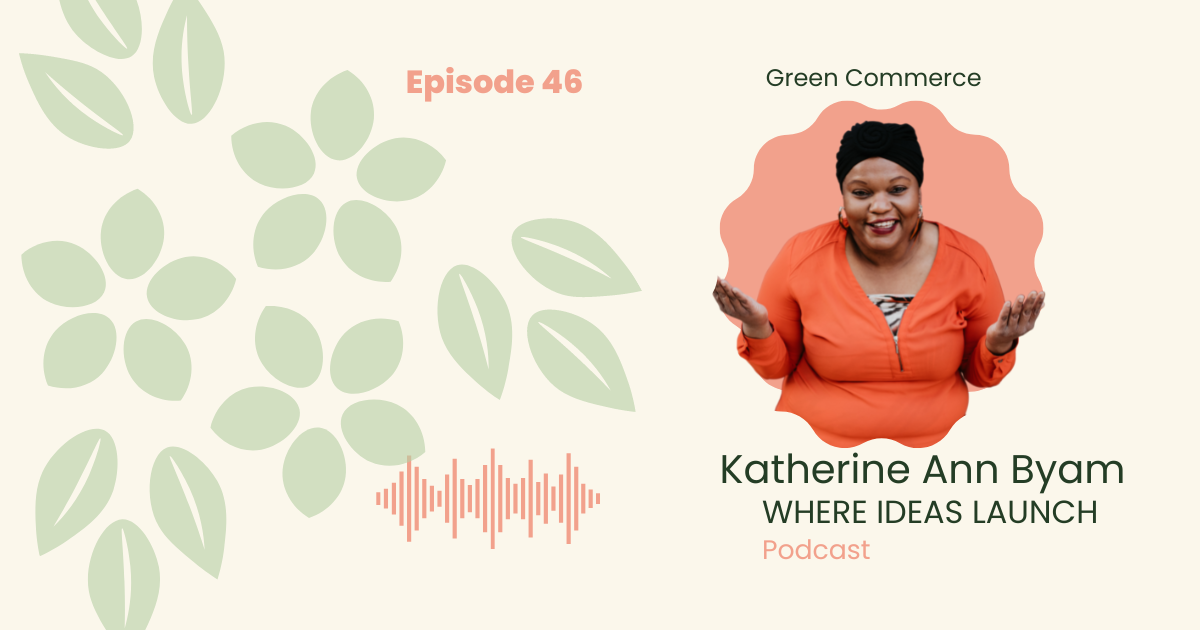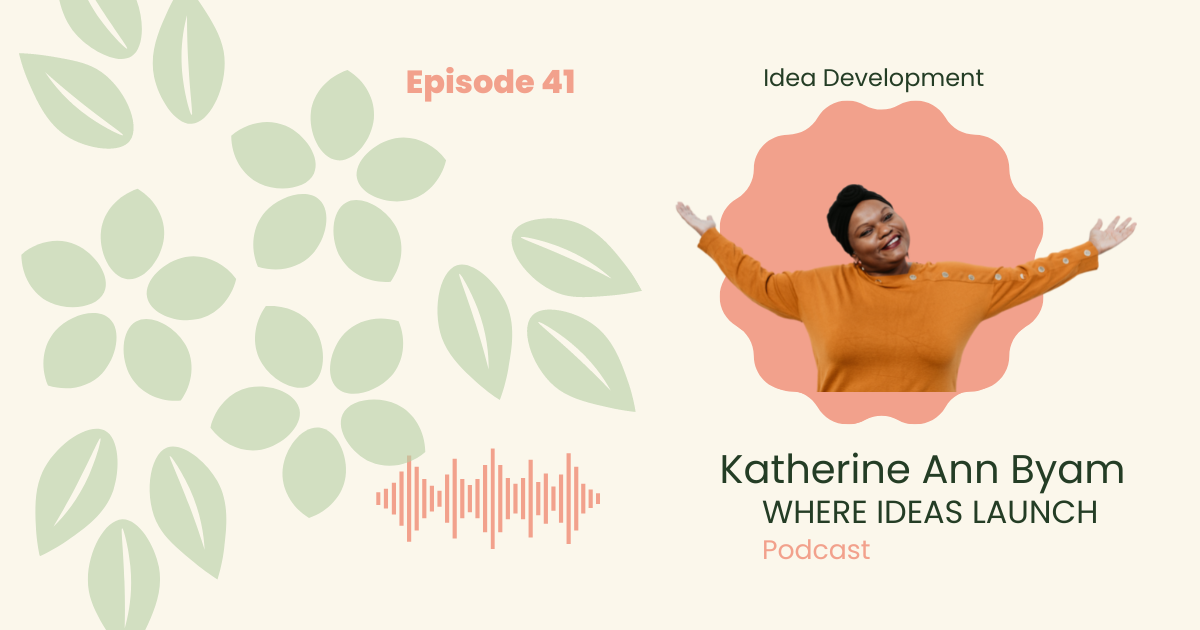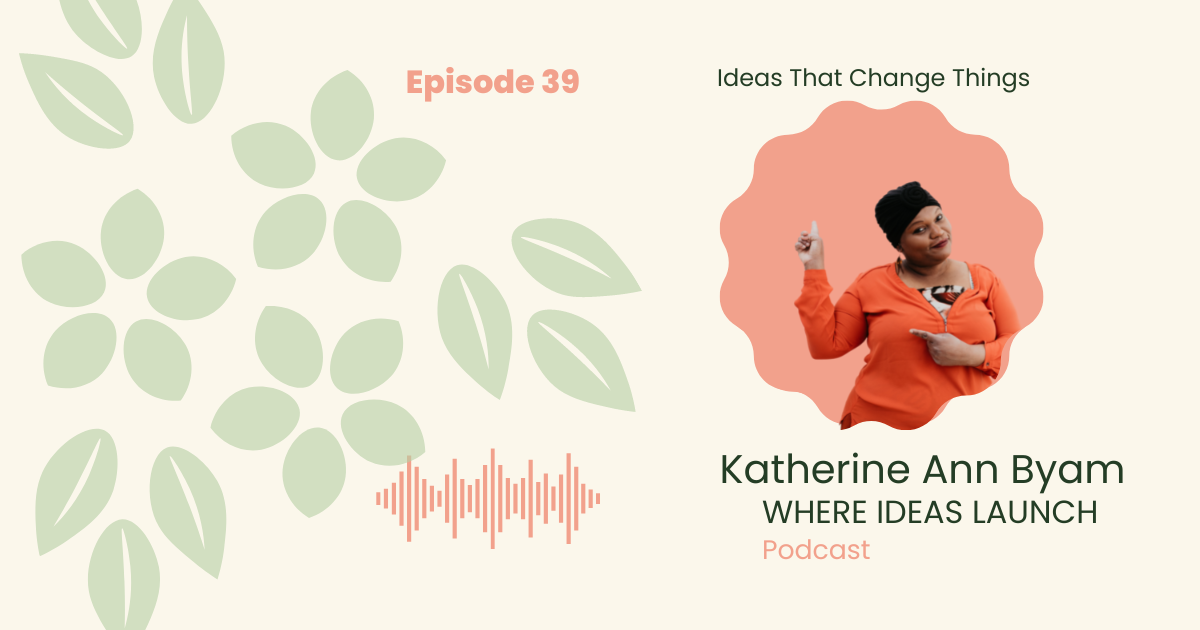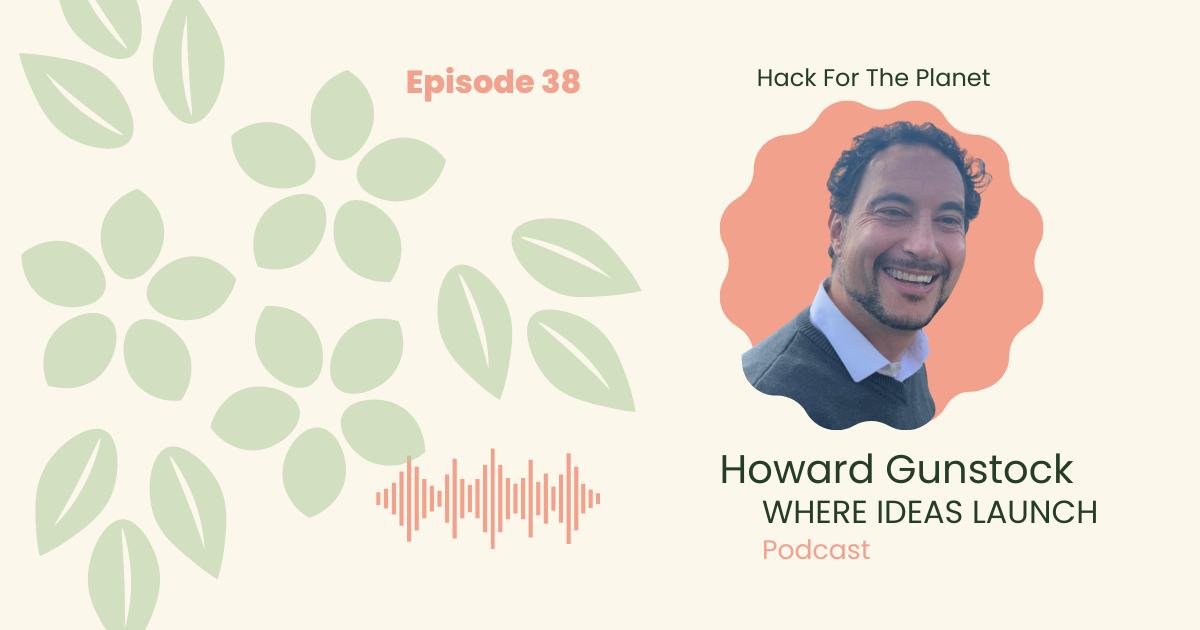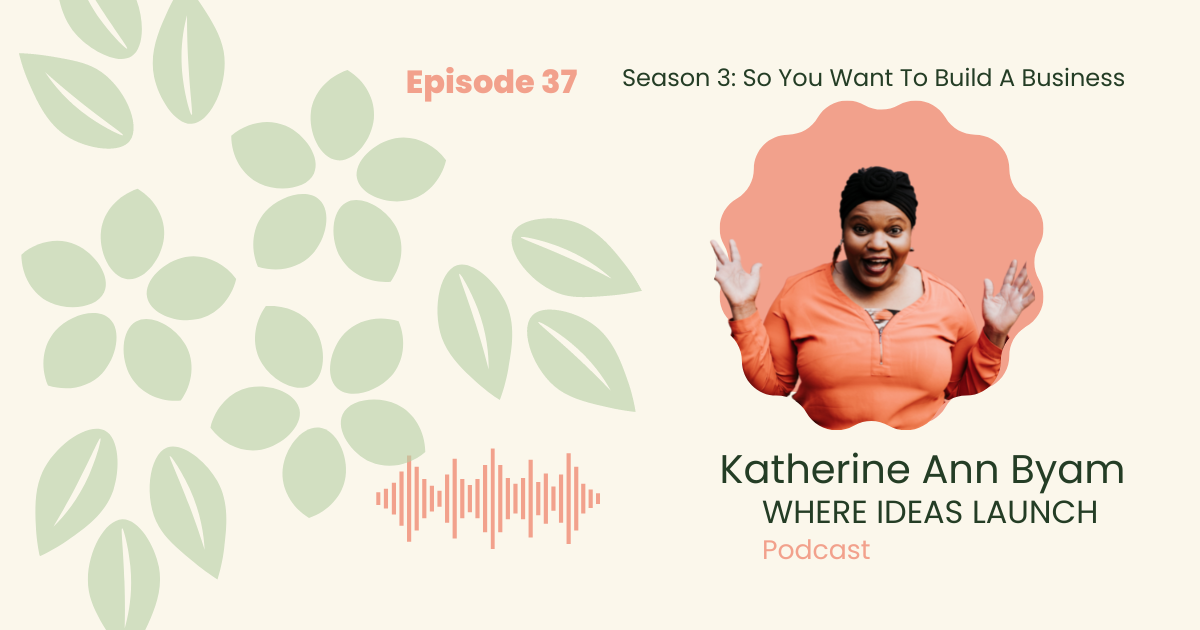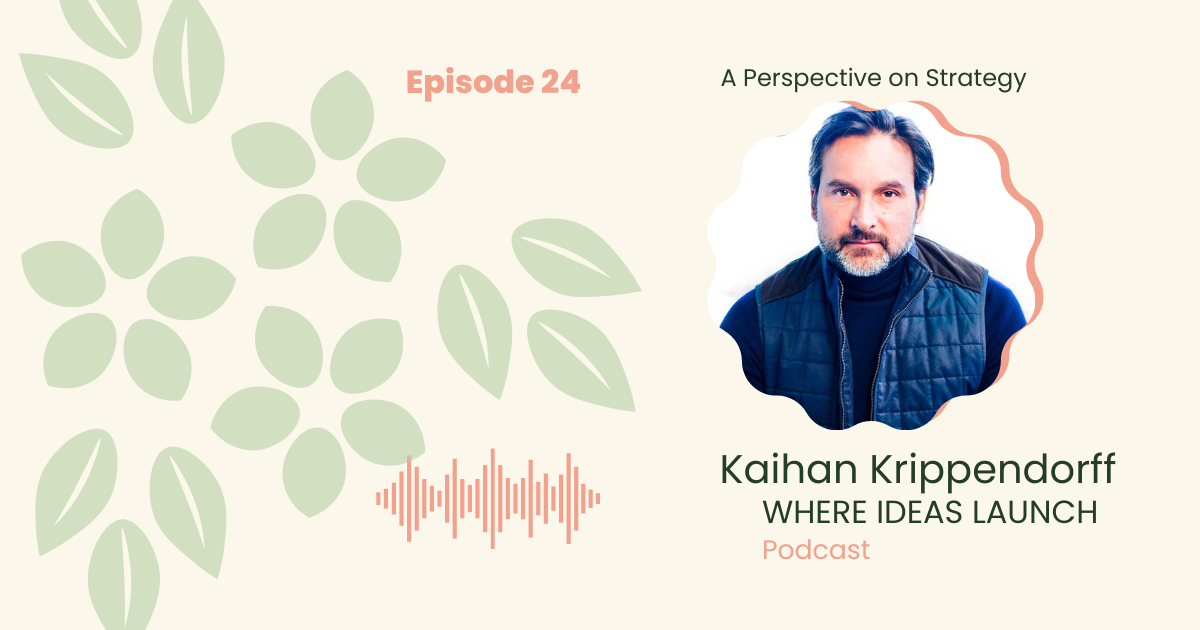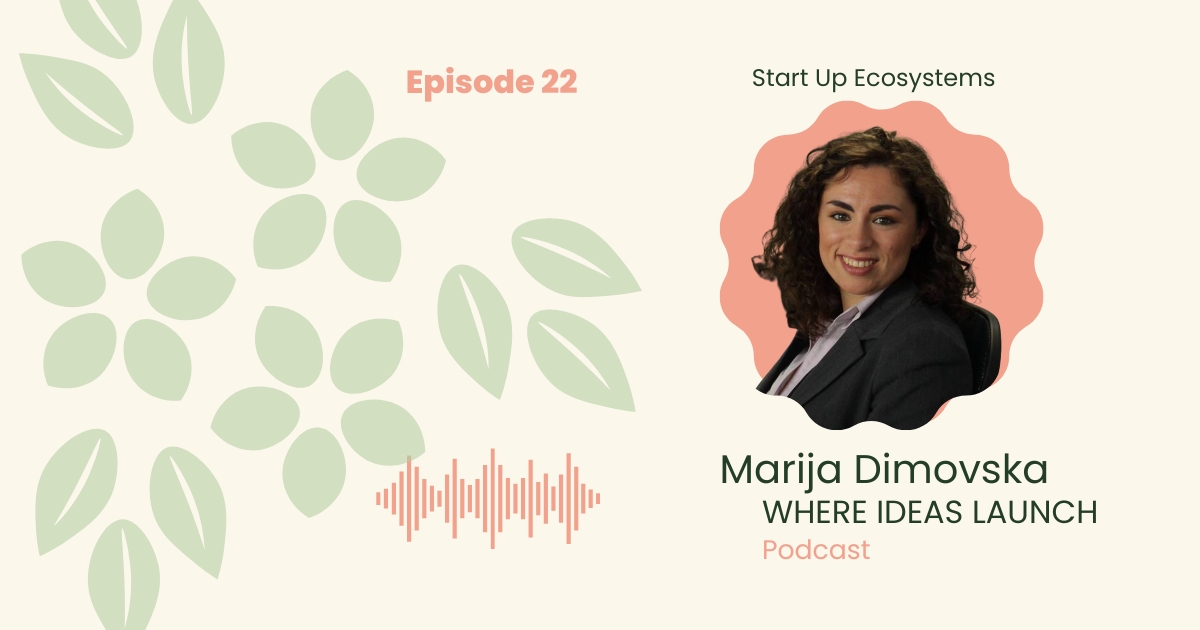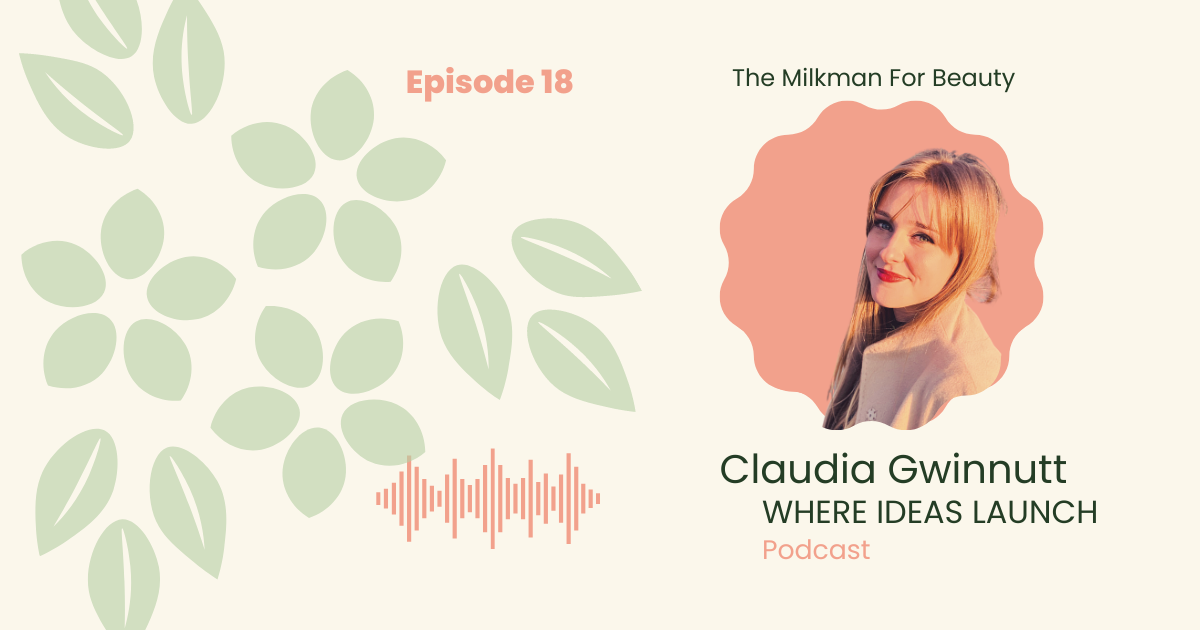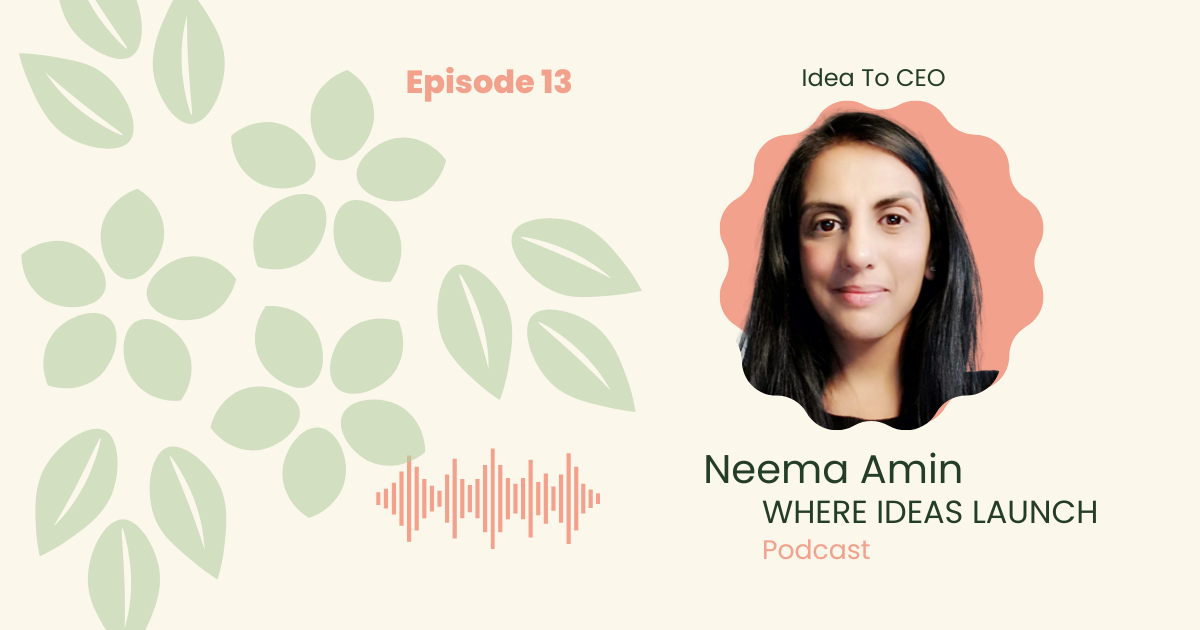069 Waste to Wealth
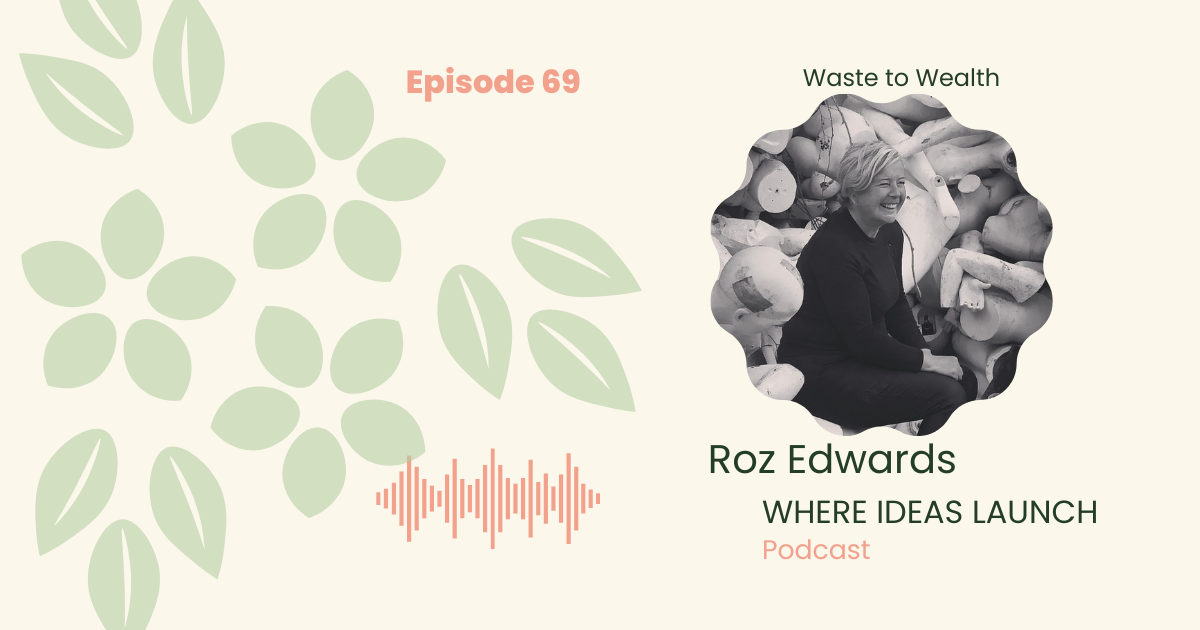
About this Episode
Roz Edwards has been a business owner now for 30 years, initially in African Art and now with a collection of thousands of mannequins rescued from landfill.
Roz started Mannakin from nothing, not even the mannequins, but she was determined to use her business acumen and creativity to create a meaningful sustainable business. Whilst researching mannequins she found an opportunity to create a business out of hiring them, to provide for her children while freeing herself from the restrictions of poverty.
Today, Mannakin Hall in Lincolnshire houses a vast collection of mannequins to hire, the majority of which has been diverted from landfill. The unusual scenery within the grounds has created a popular film location, and a major source of Roz’s wealth and business growth. Roz has also started Club Mannakin to help independent, creative business owners grow and scale.
We talked about:
Her growing youtube following of people inspired by her story (over 1mn views)
What it's like starting an idea (circular economy) way before it's time had come.
The challenges and successes in growing and scaling the business
Tips for sustainable business owners just getting started
Subscribe to Where Ideas Launch
Episode Transcript
Katherine Ann Byam 0:03
Roz, welcome to where Ideas Launch!
Roz Edwards 1:37
Hey, Katherine, thanks so much for having me on here. So exciting.
Katherine Ann Byam 1:40
Really great to have you. And great that your video on YouTube is absolutely blowing up, right? How many views are you up to today?
Roz Edwards 1:47
And I've not checked because I thought I'd just give it a bit of a break. Because I have been constantly checking. It's going up by about 3000 views a day, which is just a It's just incredible. So I think the last time I checked it was on 1,011,000 and something so oh
Katherine Ann Byam 2:06
my goodness, it's incredible. So what we're talking about listeners is that Roz had a film crew come up to her mannequin empire. And it's just been off the charts how people have been responding to what she's been doing. So So Roz, I'd like you to share with my listeners, the origin story of mannequin and how you got started.
Roz Edwards 2:27
And there's a deliberate misspelling of the word mannequin. And there's a little story behind that. And that is, I was going to be a retail consultant. I had no intention ever of working with mannequins, it never even entered my mind. But I was putting content on my website all about retail strategy. And I thought, well, mannequins are a big part of retail, but I've never worked with them. So let's start researching.
And I basically put a page on my website that said, I've got mannequins to hire, which I didn't have my telephone number, and then just some pictures of some mannequins that I knew well, I could buy some, you know, if it was just like, let's let's just put this out there on the internet and see what happens. within 24 hours, my phone started ringing with people wanting mannequins, like in London next week. And of course, I didn't have any, so I had to sort of lie and just say, Oh, I'm terribly sorry. They're all out on hire at the moment. So then, it basically carried on and you know, for the last was for nearly 14 years now.
The phones never stopped ringing. But in those early days, I was operating off of Roz Edwards, just my own website. But I thought, No, this is it needs its own name. So being a little bit of an expert with websites, and SEO and everything, my initial thing was, well, I should try to get mannequins, the correct spelling, you know .com.co.uk and all the rest of it. So of course, that domain name had gone. So I went for misspellings. And then when I saw that, I could do Mannakins spelt quite phonetically. And then I broke that word down into two, which was Manna Food from heaven. And kin - kindred spirit. And I just thought that this is perfect name is absolutely a perfect name for it. Because I was literally I had nothing. I was living in a council house on benefits. No job. I'd returned from Milan after living in Malawi for 10 years. And really low self esteem. But I had all this business experience. It's like, nope, we're going to, we're going to rebuild, we're going to do something. And it probably took me about two years before I believed that I could actually I can make money out of dummies. And but it's yeah, it's it's a wonderful gift from heaven. Basically,
Katherine Ann Byam 5:02
Congratulations on all your success, it's immense how you've managed to turn this into a mannequin empire, tell us a bit about the business model or models that your mannequin operation uses, and how your success has been over the years.
Roz Edwards 5:16
So I mean, obviously, in the early days, it was taking very, very little money. And the biggest turnover we've ever had in the year is just shy of half a million pounds, which is phenomenal, really, I mean, even I couldn't quite believe that. And but basically, the way that mannequin works is, it has a huge collection of mannequins, so they're all tidied up, you know, made to look beautiful. And then they're advertised on my website for hire.
And we do sell some but the, I'd say maybe 70% of the business is hiring. So they all look lovely, and they go out in boxes get delivered lead a much more exciting life than I do. And then when they come back in, of course, they've got fingerprints all over the maybe some of the joints that they've got a joint for example, that fits the the arm and the hand together, you know, maybe that's been busted, you know, whilst they're using it, they haven't quite taken good care of it. So then they come back in, and I've got what we call the, the fixing room, for want of a better name.
But in the early days, my children nicknamed it Dolby city, because I actually used to do this in my kitchen from home, fix the mannequins and get them all ready to go back out again. So in actual fact, on the doors to the fixing room, it doesn't say Dolby city because you know, my kids name that after the TV programme.
So they all get prepared. So that can involve Yep, putting bits back together again, sanding them down, cleaning them. And then I've got a spray Bay. So they go into the spray Bay, they're wheeled on, like clothing, Rails, those are, they're all hanging upside down.
And they go in front of the spray, they they have a new coat of paint, if they don't need all of it, they might just need a waft over some of the more than others. And then they get packed. And they go back into their boxes again, and they're ready to ready to go and have fun.
Katherine Ann Byam 7:17
What challenges have you faced or because it sounds like you haven't had challenges, what would you say has been responsible for your success.
Roz Edwards 7:25
So a really, really big challenge that I met. And I didn't find a huge amount of help out there for this either, was, you find that you get to a certain stage with a business. And you have got a certain amount of turnover, as well, and a certain amount of burnout. So you find yourself doing everything because you're, you know, you're a sole trader, but it was a limited company, but a sole person working within that business.
And so there was a point where I'm driving vans into London to deliver like big quantities of mannequins. But I've got my headset on with connected to my phone, because I'm also the receptionist. So then I would get to a lay by and if I couldn't answer the phone in time, I would obviously phone them back my little notepad and pen in the van, and writing all of that down, and then having to come back.
And obviously I've got to, you know, replenish the stock after it's been used. And it was quite exhausting. So my biggest challenge really was, I can't do any more myself, this can't go any bigger. But it can go bigger because the demand is there. So then it was a case of right and compartmentalising as the right word to use everything. So okay, let's have someone on the reception and doing know answering the phone, doing the sales doing all of the admin, right, that's one person's job.
Now let's get someone fixing the mannequins. Now let's get someone spraying the mannequins. And so at one point I had about 10 staff. But that is another thing, again, is bringing all of these people in because all of a sudden, you've changed from being this kind of really exciting times of running your own business and making money, too.
I've got to be like the staff police now. You know. So anyway, what I did is I went and took a course in management and that helped enormously. But I found my role had changed, you know, because I'm really I'm now properly the director, and I'm directing everything. So that that was a big challenge, but a huge amount of success and you know, massive amount of wealth came out of that just at the right time. So it all pays off. It all pays off. Nothing's easy, otherwise everyone would be doing it.
Katherine Ann Byam 9:54
Absolutely. No. And I totally get that it's a big jump once you start bringing people on because as you say it's a completely different job. It's a completely different role. And not all of us want to do that role.
Roz Edwards 10:06
Yeah. And we don't have the experience, we don't have those skills. I mean, there were times where I really felt that How the hell am I going to do this? You know, because I don't know how to manage somebody. So I learned. That's what you do. So you've just quickly get on and you learn,
Katherine Ann Byam 10:22
Really outstanding. And I want to tap into the circular economy principle that you're running your business on, I can imagine that when you started, there wasn't a lot of talk about the circular economy, how did you influence clients choices in this way.
Roz Edwards 10:36
So it that is actually quite an ongoing battle, because it can come down to price. But it can also come down to almost like people's greed with things, they want to possess things. So they don't necessarily see until you know, I've spoken to them, how hiring can benefit them. And of course, as I've just explained that process, you know, the mannequin comes in, it goes here, here, here, and it goes out again. So they're constantly spinning round and round and round that there isn't more of a circular business model there, I think to show. But the whole mannequin industry is linear.
Let's go and get them all made in China quite often, somewhere in the Far East, there are other places that make them but that's, you know, the main manufacturing point, let's ship them all that way, right across the world. And then we'll have them in the shops. And then usually, maybe I think the cycle is gone longer now, but it used to sort of be every four years, right? Okay, we'll get rid of those mannequins now.
And then we'll go and get some more. So you've just got them, they're all doing this journey like this all the time. And what hiring does, is what we've already got the mannequins here, let's cut out all of that transport. We don't need it, because they are here. And getting that message across is easier with the smaller independent businesses. But when it comes to the big guys, they can't quite see it.
Some can some of you know someone now working with doing it. But generally, it's, you know, like I said, they they've been transported, they'll be used for however many years, and then crushed and go to landfill. So my job very much is persuading my clients that look, they're here. They're, they're beautiful. And in actual fact, because we're renovating them all the time, every time they you know, they've been out and they come back in, they're better than these ones that you can buy, you know, from from the Far East.
And then let me see what I can do about all of this waste and this rubbish. So I got a phone call from someone who said, Oh, I see what you're doing. We read this as quite a few years ago now. But I see what you're doing. We've got about 100 mannequins that are going to go in the bin. But the owner doesn't really want that to happen. They want them to be reused. Would you take them? So I said, Well, yeah, of course, how many again, he said, 100. And then over the space of the next four months, and this is what I was buying mannequin Hall as well at the time.
So thank goodness, because 25,000 of them turned up. There was one Arctic Chuck after another. And I remember phoning him and just saying, Are you having a laugh? And he said, Well, do you not want them because they are going to be crushed if you don't want them? And I said, Well, okay, send them. Because there's an issue here. There's a problem. And I want to fix it.
Katherine Ann Byam 13:36
It's so amazing. I just love this story. And I want to talk a little bit about mannequin mountain and and that location in Lincolnshire, can you tell my listeners what they can experience when they visit?
Roz Edwards 13:48
And we've had a couple of horror films made there. So you can imagine, really, it's it's most horror films, they start with maybe you know, two girls are in a car, and the car breaks down and it's raining, and it's dark. And they live too long. They find this place, I think, Oh, well go in there and use the phone because you know, it's out in the middle of nowhere, and there's no one there, their phones aren't working and all the rest of it. And then they obviously they wander in and discover that they've made the wrong you know, they've taken the wrong term, basically, it's very much that kind of vibe to it. So there's some beautiful big gates that you drive through.
And then you're just hit by which one of my friends said it's a visual assault, basically, that's what it is. You don't notice the mountain when you come in because like you come in and it's just to the left of you. So quite often people come in and then when they're driving out, they go, Oh my goodness. All of those may say Yeah, and so there are the buildings themselves that used to be a secret airbase for the Americans during the Second World War.
So that's all quiet exciting story as well, and but there are literally like, you know, mannequins all over some sorted some waiting to be sorted. And then yeah, there's all sorts of creepy looking buildings. fantastic views out the back when you get round to the back. Absolutely gorgeous views across the Lincolnshire ridge. And so it's a really beautiful location. And then yeah, and then you would wander around or drive around because you can drive all the way around. And then there's just the biggest pile of mannequins that you've that anybody has ever seen. I mean, I'm sure not many people have even seen a small pile. But this is it's colossal. I think someone recently told me you can see it from space
Katherine Ann Byam 15:42
for. And I know that you also have a Halloween feature as well.
Roz Edwards 15:47
Yeah. So we get people in and in the daytime, and, and almost everybody says it. And that is, I bet it's really scary here at night. And so I went, I went down to Somerset, and it was at the time it was 2015. And it was the time when Banksy had launched Disneyland. So I went in and had a look around there and totally fell in love with the whole thing. And I looked at the size of that site and thought, Well, that's about the same size as mine, I could do something like this.
And then that would provide the solution, if you like for all of those people is that I bet it's scary here at night. So what I did is I followed banks his whole way that he promoted it as well with you know, there's trip hazards, there's no lighting, you know, there's no toilets, all of this kind of thing, come with a torch, you know, prepare a little survival bag, you know, in case you get abducted by mannequins, and people loved it. They absolutely loved it.
So that's, you know, gone on for several years, when it came to 2020, of course, and all the fun that we've had there. We were all in the tears at that time. And everyone had to still stay in the family bubbles. Somebody said to me, you're going to do the Halloween this year? And I said, Well, I can't. How can I do it? So we've got this road, which at the time, obviously had loads of mannequins in the way. So I said, right, let's go clear that because people can drive round.
And that's what we do. We had a really successful event that year. And so many people thanked us for it, because we'd all been shut in for such a long time. The whole feeling that they could come out and be safe as well. I mean, I made up a story that there are child mannequins on the loose with teeth, you know, and they're very dangerous. So do not get out of your vehicle. I mean, obviously, I had the environmental health people at the council phoned me obviously have concerns with an event going on during COVID.
And I had them in absolute fits of laughter. They just said, we've got nothing to worry about with you, Ross. Just go ahead with it. It sounds brilliant. And then last year, we people were able to walk around again. So good. It's good.
Katherine Ann Byam 18:02
I want to wrap up with a final question, which is there are a lot of people who want to start sustainable businesses or have started them, and they're struggling with their growth.
Do you have any advice from the journey you've been on? Bringing the circular principle to life?
Roz Edwards 18:18
Yeah, so one thing that I think we can all do, which perhaps we don't, is just constantly be on the look, if you haven't already got a product that could be circular. Just keep your eyes peeled, because there are things out there that nobody is actually doing yet. And what's been great about mannequin is, man, I remember when I started someone saying, Oh, you say you're going to do shop fittings now and counters for shops and things. And they said, No, I'm not going to get distracted by all of this.
It's just going to be mannequins. Because I mean, even within that niche, there's no other film location, Halloween events, and people being able to stay over in the mannequin graveyard at night. That's one of my next things I'm about I'm about to launch. And then just establish that really sort of simple, easy brand, right from the beginning. I mean, when I started, I thought if this isn't going to go big, I'm going to know quite shortly. And so I can change the idea and start to do something else. So yes, I'd registered the domains. I registered it as a limited company.
And I also bought the trademark as well. So I own the word mannequin, because nobody on this earth was going to get in my way, you know, so I was very, very determined. And all of those things are just so important. I've seen that they you know, a few people that are they haven't taken those steps, which you know, and it because they didn't know they weren't advised that that's what they should do. And then they've got so far with their business.
I need to find that there's someone bigger out there doing it. They're not the same but very similar. And they've trademarked the name. So what do you do that You know, how can you move forward, you've got to change and rebuild. And that, you know, having to get to that point is, is devastating, actually. But also, the other thing is to, is to think big. So interestingly, with my business, I knew that there were other manikin companies turning over in excess of a million. So the numbers game for me was, it's open, there's no, I only need this amount of money or what have you.
But interestingly, what happened is, yes, the turnover hit, you know, half a million, I've got all of these staffed worry about, it turned into this other thing, and I could see it going into something that I didn't necessarily want. And so I have actually scaled it back now, you know, with lots of different processes in place, so that, like all the automation, or the website is automated for people to go and hire mannequins and everything. So it's so important that we don't just start something and, and just get carried away in the here. And now we have to have that vision, we definitely have to have that vision and those solid foundations of things like, yes, it's a limited company.
Even the VAT return, I've registered for VAT when I was turning over 100 pounds a month, you know, the VAT threshold is obviously it's 85,000 pounds or something. Most people wait until they get to there. But then you've got to either add 20% onto your prices, or you've got to absorb that, you know, because it's an extra cost. So all of these sorts of things, but there's got to be foresight in it. You know, there's got to be a vision there of actually why why are we doing this? Why are we doing this?
Katherine Ann Byam 21:40
And I guess if you're if you're selling to companies, or hiring to companies, etc, then having that fact charges negligible to them. So it all makes sense if you design it that way. So finally, tell my listeners how they can find you.
Roz Edwards 21:53
So mannakin.com, so that's MANNAKIN because everyone has a problem with spelling, even the correct word of mannequins. And I've got a really, really beautiful lead magnet that explains why the mannequins are sustainable and circular. And what kind of mannequin you would need for different situations. And then a reference to the extra bits and pieces that I've got going on including club mannequin as well.
Katherine Ann Byam 22:24
Wonderful. I'm going to leave all the links for them. Thank you so much Ross for gracing us with your presence today. I know you're a very important YouTube superstar. Thanks for joining me.
Roz Edwards 22:36
Thank you.
Katherine Ann Byam 22:40
Season Four of where radius launch was brought to you today by Katherine Ann Byam business resilience and strategy consulting services. Katherine provides business assessments and strategic support to help guide your business toward a netzero future. Get in touch with Katherine Ann Byam on LinkedIn
